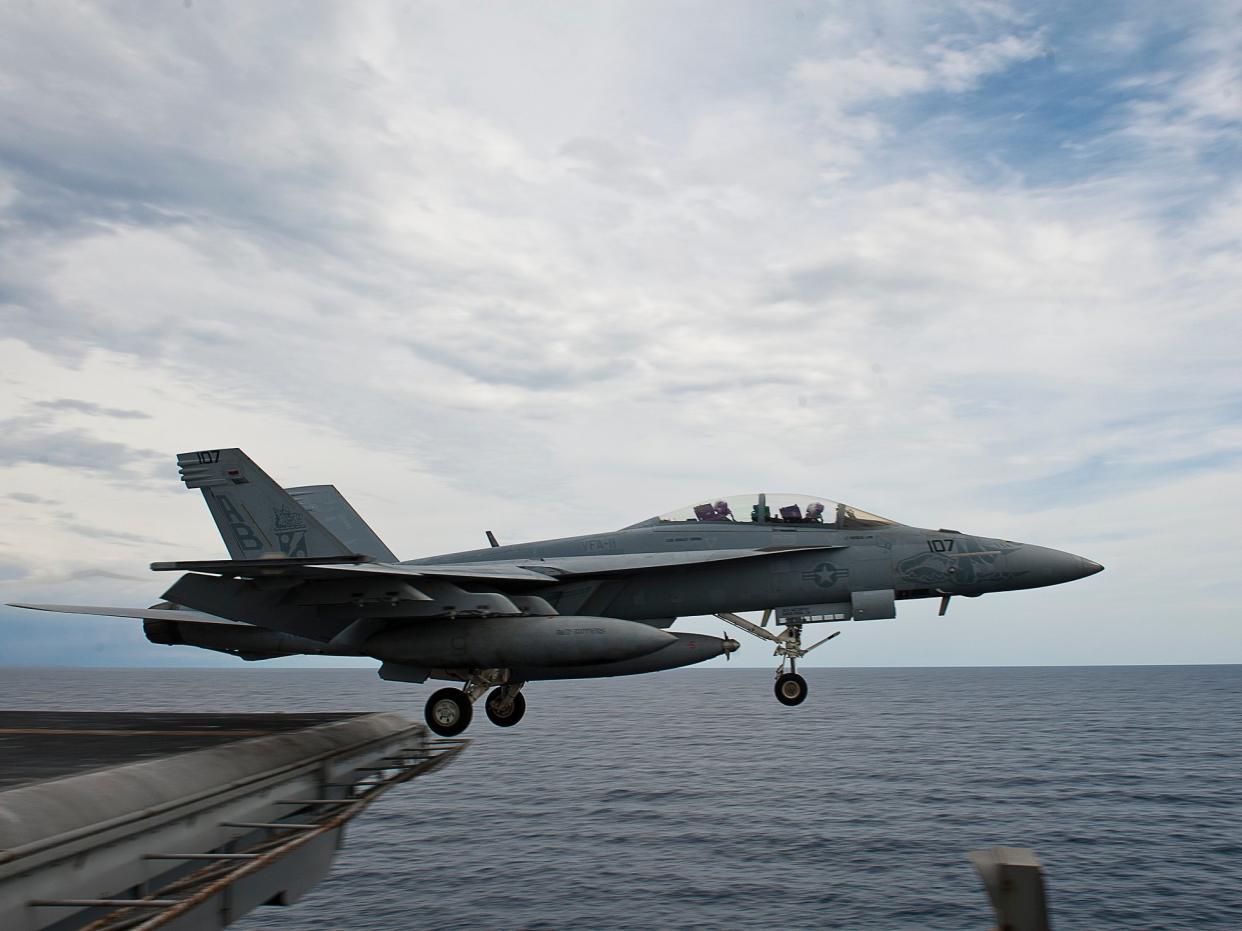The military's F/A-18 jet keeps choking off oxygen to pilots during flight

US Navy Photo
F/A-18 Hornets of all variants seem to be affected by a serious issue: oxygen shortage, or hypoxia, is plaguing the fleet of Legacy (A/B/C/D), Super Hornet (E/F) and Growler (EA-18G) aircraft.
As reported by Bloomberg News, all models of F/A-18 have shown steady yearly increases of what the Navy calls “physiological episodes” due to oxygen deprivation and cabin decompression since May 1, 2010.
Navy officials testifying before the House Armed Services subcommittee called the problem the “No.1 safety issue.”
And what is even more concerning is the fact that there seem to be little clue as to what is causing it.
The “lack of overall progress” is “of great concern,” said Rep. Niki Tsongas, the top Democrat in the panel.
While investigating the issue (with a task force of 62 people), the U.S. Navy has also enhanced “reduced-oxygen training” so that pilots can quickly identify the symptoms of hypoxia. Two aircraft carriers have installed chambers for aircrews exposed to decompression.
According to Bloomberg News, 130 out of 383 episodes “have involved some form of contamination,” according to a Navy and U.S. Marine Corps official statement. 114 involved an environmental control system component failure, 91 involved “human factors,” and 50 concerned a component failure with the on-board oxygen generating system.
Older versions of the plane, the A through D models, have problems with cabin pressure whereas the Super Hornet and Growler issues “would appear to point to the onboard oxygen generating” system to which the Navy’ has already made changes.
Not the first time
This is not the first time U.S. forces have faced the oxygen deprivation issue.
A similar problem plagued the F-22 Raptor fleet to such an extent the radar-evading aircraft was grounded back in 2011, following a deadly incident involving some Alaska-based jets.
In that period, F-22s experienced 26.43 instances of hypoxia or “hypoxia-like” problems for every 100,000 flight hours, compared to 2.34 instances per 100,000 hours for the F-15E and 2.96 for the latest version of the F-16 (the Hornet was not part of the data set released back then.)
After lifting the flight ban, the Pentagon restricted Air Force Raptors to fly near a “proximate landing location” in order to give pilots the possibility to land quickly if their planes’ On Board Oxygen Generating System (OBOGS) failed.
In May 2012, two 1st Fighter Wing “whistleblowers” appeared on CBS 60 minutes to explain why they were “uncomfortable” flying the Raptor (before changing their mind few days later).
The flying branch eventually determined a valve that regulated oxygen flow into the Raptor pilot’s pressure vest was too weak and F-22s were given a new backup oxygen system as part of multiple contracts awarded to Lockheed Martin (worth $30 Million) that automatically dispenses oxygen when OBOGS is not providing enough.
Various problems
The news that all Hornets might be choking their pilots comes in the wake of a Super Hornet and Growler fleet-wide grounding and (concerning but for the moment totally unrelated) increase in the crash rate, especially among the oldest models.
Nine incidents involved “Legacy Hornets” (including the Canadian CF-18 lost on Nov. 28, 2016) in the second half of last year, with the latest loss on Dec. 6, 2016, when a USMC F/A-18C crashed off Kochi, causing the loss of its pilot.
In the wake of Hornet crashes from June through October, the U.S. Marine Corps temporarily grounded its non-deployed Hornets. Unfortunately, a few days after the ban was lifted, two more F/A-18Cs were lost.
The crash rate has affected the ability of the Corps to perform training activities while committing to support real operations: out of a requirement for 171 aircraft, the service had only 85 Hornets available for training, according to a report last year.
In order to address the shortage of operational fighters, the Marine Corps has launched a plan to upgrade 30 retired legacy Hornets (currently stored at the 309th Aerospace Maintenance and Regeneration Group at Davis-Monthan AFB, Arizona) to a standard dubbed F/A-18C+: once upgraded these “gap fillers” should be more than enough to conduct combat operations in low-lethality scenarios like those that see the Marine Corps at work lately. Still, they might not have a fix for the hypoxia issue.
“Trump’s favorite jet”
As a side note, in their story on Bloomberg News, Roxana Tiron and Anthony Capaccio call the Hornet “Trump’s favorite fighter jet.”
This is due to the fact that Trump has been advocating the Super Hornet since December 2016, when the then president-elect posted a pretty famous tweet that favored the Boeing combat plane over the Lockheed Martin F-35C.
Tweet Embed:
https://twitter.com/mims/statuses/812061677160202240
Based on the tremendous cost and cost overruns of the Lockheed Martin F-35, I have asked Boeing to price-out a comparable F-18 Super Hornet!
NOW WATCH: What happens when someone dies on an airplane
See Also:

 Yahoo News
Yahoo News 

